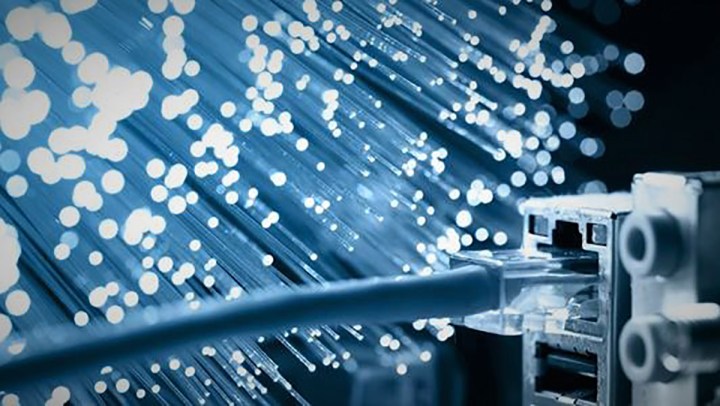
Engadget reports that scientists may have found a way to remove those expensive cables while maintaining the high speeds that make fiber optics such an attractive option for so many people. Researchers at Glasgow University have discovered a way to “twist” photons, allowing them to store large amounts of data while avoiding interference from the air. By passing the photons through a special hologram, similar to the ones found on credit cards, the researchers were able to give the photons “optical angular momentum,” which allows them to store information beyond ones and zeroes.
The team tested this new method by transferring data across 1.6 kilometers (about a mile) in Germany, making sure to test the technology in an urban setting, where buildings and other facets of city life could potentially interfere with the transfer of data. Previous studies had indicated this was possible, but it was unclear how they would work in an urban environment.
Dr. Martin Lavery, head of the Structured Photonics Research Group at University of Glasgow, said that he believes this method may lead to the creation of wireless transfer that “can potentially give us the bandwidth of fibre, but without the requirement for physical cabling.”
For now, however, there are plenty of questions that need to be answered before this becomes a commercially viable alternative to fiber optics. For starters, the team needs to ensure that the process can still function in inclement weather conditions such as snow or rain storms. Still, if it proves viable, then it could drastically reduce our dependency on fiber cables, allowing businesses and consumers to have high-quality internet speeds at lower prices than are currently available. Perhaps more importantly, it could serve as a way to provide high-speed internet access to rural areas, many of which are forced to rely on dial-up or other slow connections.
Editors' Recommendations
- How to change your router’s Wi-Fi password
- How to get Wi-Fi access anywhere at any time
- These are the airports that actually have really fast public Wi-Fi
- These new Eero PoE devices are for serious Wi-Fi setups only
- This dongle can bring a superfast Wi-Fi 6 connection to your old computer


